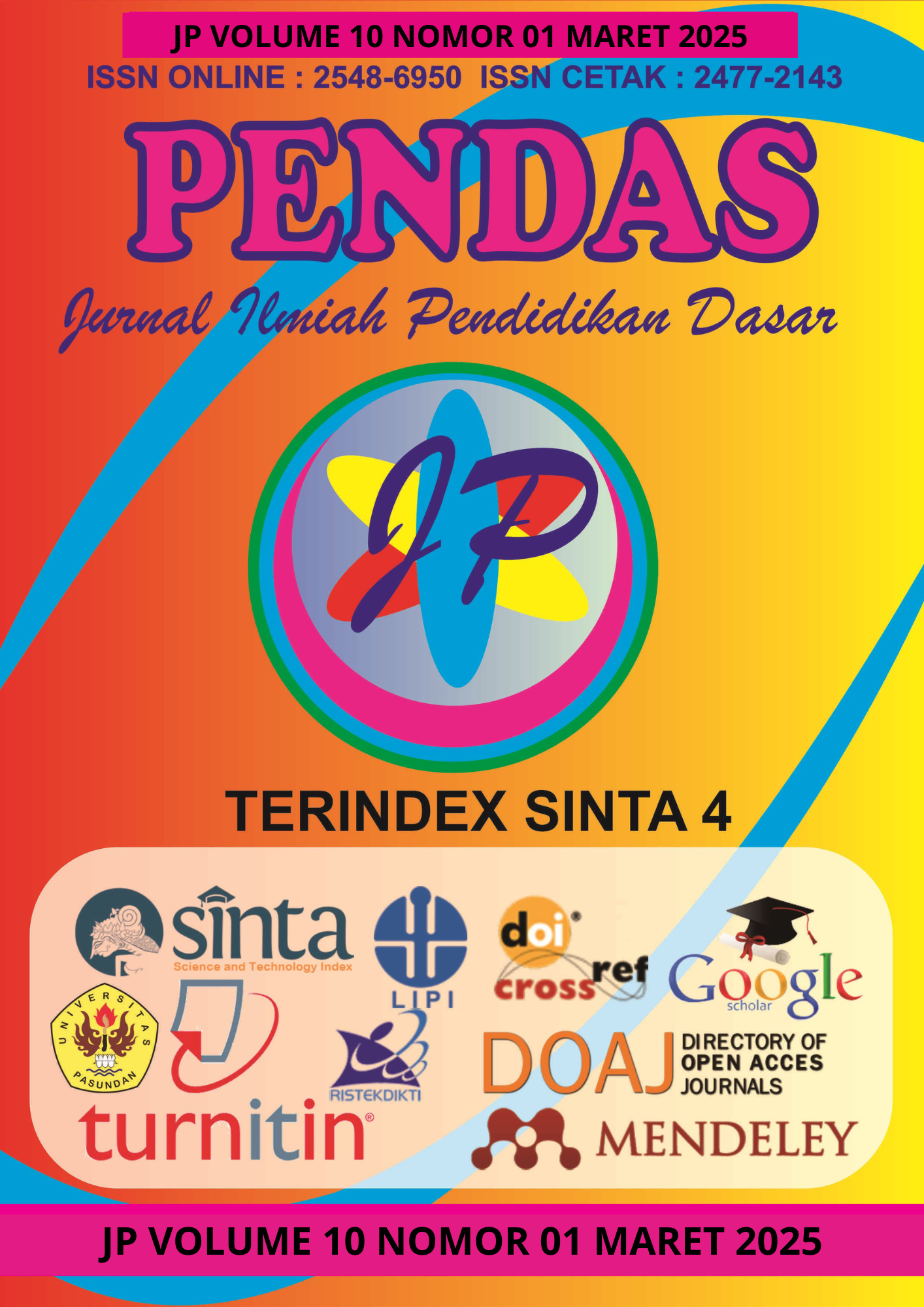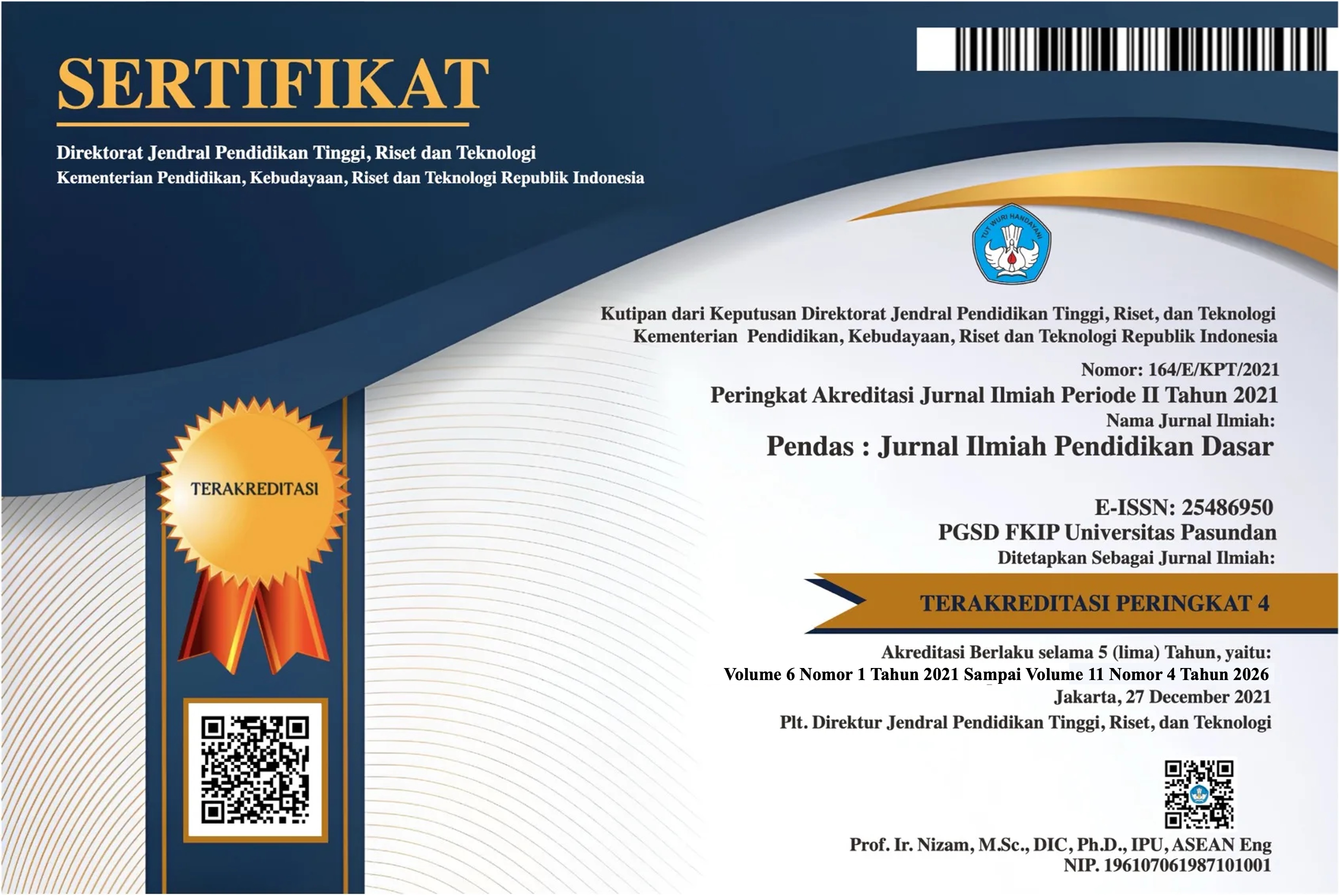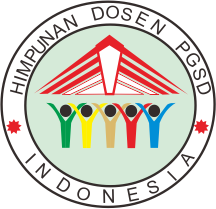IMPLEMENTASI METODE SILENT WAY DALAM PEMBELAJARAN BAHASA ARAB DENGAN MEDIA KARTU BERGAMBAR UNTUK MENINGKATKAN PENGUASAAN MUFRADAT SISWA KELAS VI
DOI:
https://doi.org/10.23969/jp.v10i01.22953Keywords:
Silent Way Method, Picture Card Media, Vocabulary Mastery, Arabic Language LearningAbstract
This study aims to analyze the effectiveness of the Silent Way method in Arabic language learning using picture card media to enhance vocabulary mastery among sixth-grade students at SD Islam Assalam Bandar Lampung. This study employs a Classroom Action Research (CAR) approach based on the Kemmis and McTaggart model, conducted in two cycles. Data were collected through vocabulary mastery tests, observations, and interviews with teachers and students. The findings indicate that the Silent Way method combined with picture card media significantly improves students’ vocabulary acquisition. In the first cycle, the mastery level reached 60%, whereas in the second cycle, it increased to 88%, demonstrating substantial improvement. This method also enhances student engagement and motivation in Arabic language learning. In conclusion, the Silent Way method with picture card media can serve as an effective alternative strategy to improve vocabulary mastery among elementary school students. This study recommends the broader implementation of this method and further exploration of technology integration in its application.
Downloads
References
Al-Jarf, R. (2020). Reading comprehension difficulties in Arabic as a foreign language. Journal of Arabic Linguistics, 12(2), 45-62.
Al-Qahtani, A. A. (2016). Why do EFL students experience difficulty in reading comprehension? English Language Teaching, 9(5), 78-89.
Aridan, M., Irwandani, Villarama, J. A., & Fuente, A. V. Dela. (2025). Post-Launch Public Interest in DeepSeek vs . ChatGPT : A Comparative Google Trends Analysis in Indonesia and the Philippines. Blockchain, Artificial Intelligence, and Future Research, 1(1), 1–12.
Arsyad, A. (2019). Media pembelajaran. RajaGrafindo Persada.
Brown, H. D. (2007). Teaching by principles: An interactive approach to language pedagogy. Pearson Education.
Burns, A. (2010). Doing action research in English language teaching: A guide for practitioners. Routledge.
Cohen, L., Manion, L., & Morrison, K. (2018). Research methods in education (8th ed.). Routledge.
Creswell, J. W. (2014). Research design: Qualitative, quantitative, and mixed methods approaches (4th ed.). SAGE Publications.
Denzin, N. K., & Lincoln, Y. S. (2011). The SAGE handbook of qualitative research (4th ed.). SAGE Publications.
Fraenkel, J. R., Wallen, N. E., & Hyun, H. H. (2012). How to design and evaluate research in education (8th ed.). McGraw-Hill.
Gattegno, C. (1972). Teaching foreign languages in schools: The Silent Way. Educational Solutions.
Hake, R. R. (1999). Analyzing change/gain scores. American Educational Research Association.
Hatch, E., & Lazaraton, A. (1991). The research manual: Design and statistics for applied linguistics. Newbury House.
Jatmiko, A., Armita, N., Irwandani, Saputro, T., & Aridan, M. (2024). Development of Science Learning Videos with the Canva Application on Socioscientific Issues Content. E3S Web of Conferences, 482, 05004. https://doi.org/10.1051/e3sconf/202448205004
Kemmis, S., & McTaggart, R. (2014). The action research planner: Doing critical participatory action research. Springer.
Koderi, K., Aridan, M., & Muslim, A. B. (2020). Pengembangan Mobile Learning Untuk Penguasaan Mufrodat Siswa MTs. Arabiyatuna : Jurnal Bahasa Arab, 4(2), 265. https://doi.org/10.29240/jba.v4i2.1769
Kolb, D. A. (1984). Experiential learning: Experience as the source of learning and development. Prentice Hall.
Masykur, R., Irwandani, I., Pricillia, A., & Aridan, M. (2024). Development of science e-modules with the STEM (Science, Technology, Engineering, and Mathematics) approach for islamic schools. Indonesian Journal of Science and Mathematics Education, 7(2), 404. https://doi.org/10.24042/ijsme.v7i2.20835
Mayer, R. E. (2009). Multimedia learning. Cambridge University Press.
Merriam, S. B. (2009). Qualitative research: A guide to design and implementation. Jossey-Bass.
Miles, M. B., Huberman, A. M., & Saldaña, J. (2014). Qualitative data analysis: A methods sourcebook (3rd ed.). SAGE Publications.
Mizan, A. N., Aridan, M., Akmansyah, M., Adelia, S., Asiyah, I. N., & Sholikha, L. M. (2022). The Development of Arabic Learning Media Based on Android for Senior High School Students. LISANIA: Journal of Arabic Education and Literature, 6(2), 178–189. https://doi.org/10.18326/lisania.v6i2.178-189
Nunan, D. (2019). Teaching English to speakers of other languages: An introduction. Routledge.
Patton, M. Q. (2002). Qualitative research and evaluation methods (3rd ed.). SAGE Publications.
Ramlan, R., Syahril, S., Kesuma, G. C., Erlina, E., & Aridan, M. (2023). DEVELOPMENT OF SOFTSKILL-BASED VIDEO GAME LEARNING MEDIA FOR MUFRᾹDAT MASTERY IN JUNIOR HIGH SCHOOL LEARNERS. Al Mi’yar: Jurnal Ilmiah Pembelajaran Bahasa Arab Dan Kebahasaaraban, 6(1), 301. https://doi.org/10.35931/am.v6i1.1706
Richards, J. C., & Lockhart, C. (1996). Reflective teaching in second language classrooms. Cambridge University Press.
Richards, J. C., & Rodgers, T. S. (2014). Approaches and methods in language teaching. Cambridge University Press.
Slavin, R. E. (2020). Educational psychology: Theory and practice. Pearson.
Syukur, A., Mukri, M., Aridan, M., & Jaafar, A. (2024). Empowering Islamic Community In Understanding Democracy and Shura Through The Wasathiyah Da‘wa Movement In Indonesia. JOURNAL OF INDONESIAN ISLAM, 18(1), 98. https://doi.org/10.15642/JIIS.2024.18.1.98-126
Downloads
Published
Issue
Section
License
Copyright (c) 2025 Pendas : Jurnal Ilmiah Pendidikan Dasar

This work is licensed under a Creative Commons Attribution 4.0 International License.



















